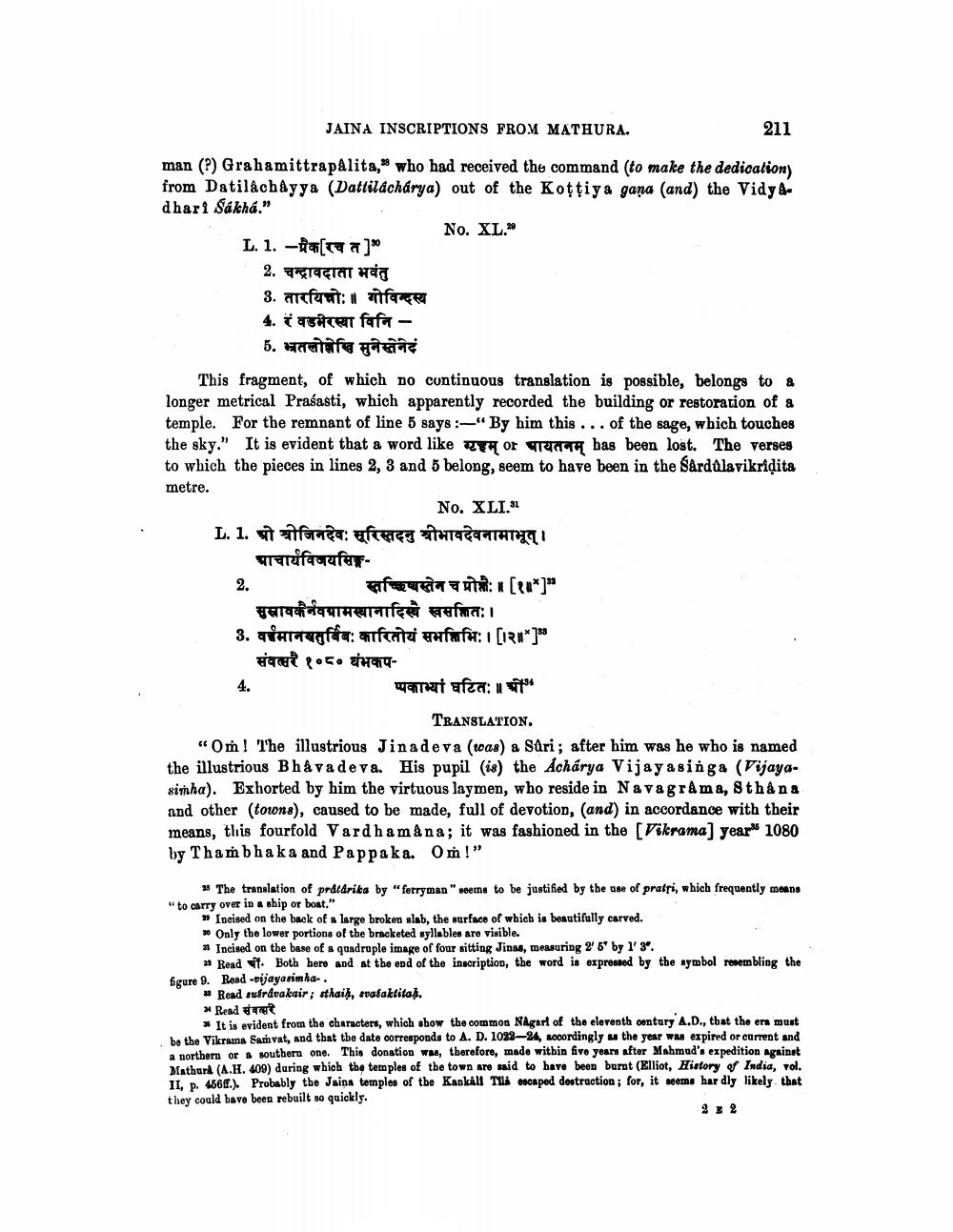________________
JAINA INSCRIPTIONS FROM MATHURA.
211
man (?) Grahamittrapalita," who had received the command to make the dedication) from Datilachayya (Dattilacharya) out of the Kottiya gana (and) the Vidya dhari Sakha."
No. XL. L. 1. -[ta]
2. चन्द्रावदाता भवंतु 3. arcfunt: face 4. TTCRT fafa - 5. भ्रतलोझेखि मुनेस्तेनेदं
This fragment, of which no continuous translation is possible, belongs to a longer metrical Prasasti, which apparently recorded the building or restoration of a temple. For the remnant of line 5 says :-"By him this ... of the sage, which touches the sky." It is evident that a word like een or rent bas been lost. The verses to which the pieces in lines 2, 3 and 5 belong, seem to have been in the Sård Alavikridita metre.
No. XLI. L. 1. unforea: afect HTCATATITI प्राचार्यविजयसिङ्ग
augat: [Ru*] सुनावकैनवग्रामस्थानादिस्यै स्वसतितः। 3. Parafda: Alfaite ufafar: 1 [1Rw*]89 संवत्सरै १०८० थंभकप
प्पकाभ्यां घटितः
TRANSLATION. “Om! The illustrious Jinadeva (vas) a Suri; after him was he who is named the illustrious Bhava deva. His pupil (is) the Acharya Vijayasinga (Vijayasimha). Exhorted by him the virtuous laymen, who reside in Navagrama, Sthå na and other (towns), caused to be made, full of devotion, (and) in accordance with their means, this fourfold Vardhamana; it was fashioned in the [Vikrama) year 1080 by Tham bhaka and Pappaka. Om!"
2 The translation of prdedrita by "ferryman" weems to be justified by the use of pratri, which frequently means "to carry over in a ship or boat."
Incised on the back of a large broken slab, the surface of which is beautifully carved. * Only the lower portions of the bracketed syllables are visible. * Incined on the base of a quadruple image of four sitting Jins, measuring 2' 6by 1'3'.
3 Read it. Both here and at the end of the inscription, the word is expressed by the symbol resembling the figure 9. Read -vijayasimha.
* Read surdoakair; sthai), svafaktitab. * Read
» It is evident from the characters, which show the common Nagarl of the eleventh century A.D., that the era must be the Vikrans Samvat, and that the date corresponds to A. D. 1092-24, accordingly the year was expired or current and a northern or southern one. This donation was, therefore, made within five years after Mahmad's expedition against Mathurk (A.H. 409) during which the temples of the town are said to have been burnt (Elliot, History of India, vol. IL. P. 456f.). Probably the Jaina temples of the Kapkau Tils escaped destruction; for, it seems hardly likely that they could have been rebuilt so quickly.




